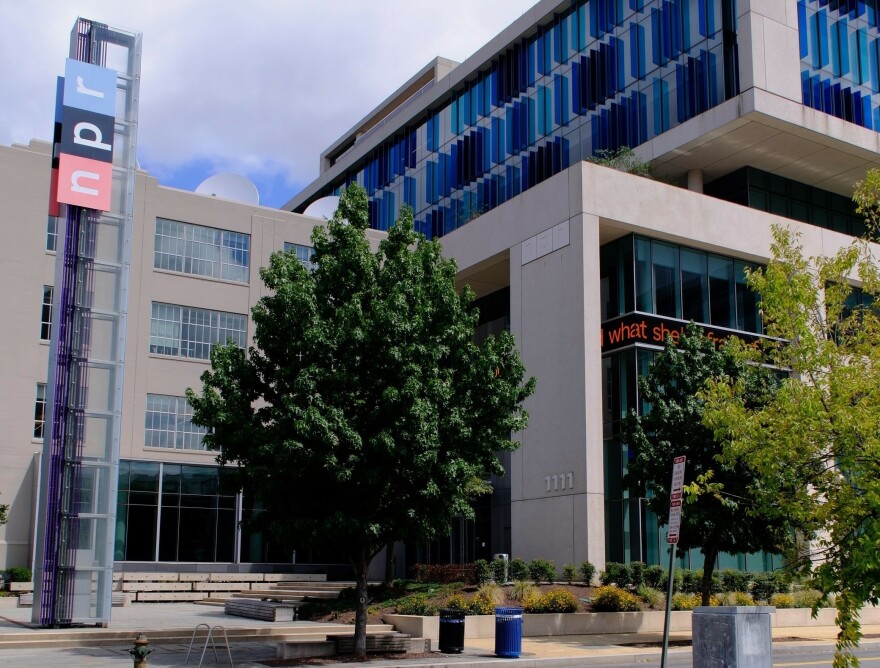In a House vote early Friday morning, Republicans edged out Democrats in a 216-213 vote that also cuts $7 billion in foreign aid.
Federal funding is a small percentage of NPR’s budget. However, local public media stations that run NPR stories receive more than 70% of the federal funds that are allocated to CPB.
Rural stations rely more heavily on that federal funding than stations near population centers that are able to build bigger membership and donor bases from urban centers.
Native Public Media, based in Flagstaff, Ariz., supports 36 tribal stations across the U.S. that rely on CPB funding for about half of their budgets, said Brian Wadsworth, the organization’s chief operating officer.
“Our stations typically already have shoestring budgets and are operating at very minimal staffing,” Wadsworth said. “So to lose (CPB) funding, we could see a lot of our stations go dark.”
That is despite a provision by Congress, amid the CPB cuts, to redirect some funds to tribal stations, Wadsworth said.
Another station under threat is KRZA in Alamosa, Colorado. The station receives up to 50% of its budget from CPB. Other rural stations that receive large chunks of their annual budget from federal resources include KYIE in Labwai, Idaho on the Nez Perce tribal land, KGHR in Tuba City, Arizona, in the Navajo Nation, and KDUR in Durango, Colorado.
KANW in Albuquerque, New Mexico, and KSFR, just 60 miles away in Santa Fe, rely on CPB for up to 40% of their budgets.
However, many larger public radio stations across the region, and nation, were sounding the alarms after the House vote, saying cuts could impact their budgets adversely. Some began emergency fundraising campaigns.
The cuts stoke concerns that news deserts could expand. Those are large areas where there is no access to local news. And public radio stations have helped to fill those gaps in remote areas amid a decades-long decline in newspapers. Local stations are typically locally owned and operated, which positions them to better understand the information needs of their communities, according to a 2023 report by the Shorenstein Center on Media at Harvard University. But the report also pointed out that funding is one of the largest obstacles to public radio stations continuing to provide ongoing service.
Funding cuts are also expected to reduce emergency services, like breaking news reports and warnings. The Public Radio Satellite System (PRSS) that provides programming feeds to over 1,300 public radio stations is the same system used to send national emergency alerts.
These stations, Wadsworth said, are irreplaceable during extreme weather events.
“It really puts these communities in danger,” he said of the cuts. “I just really fear for the safety of our tribal communities without our tribal stations being there to provide this life-saving information.”
In many rural areas, internet and mobile phone access can be spotty or nonexistent. During power outages, a radio with batteries can be a lifeline. Many stations also provide information about emergencies in real-time. This includes newsroom reporters and editors working on breaking news to get information from officials and from the source of events where they are happening.
While public radio stations around the country are still trying to make sense of how the rescissions measure will impact programming in their communities, Democrats and a handful of Republicans are already looking to restore any lost services.
Republican Rep. Mark Amodei of Nevada, who voted in favor of cuts, cited support for funding public media.
"The rescission package passed this morning does not take away any funding for the remainder of Fiscal Year 2025, and we will have at least three more opportunities — through the Appropriations Committee markup process, voting on the House floor, and conferencing with the Senate — to ensure that local broadcasting is still supported in FY26," Amodei said in a statement. "Additionally, should Congress not pass FY26 appropriations before October 1, current FY25 levels will be maintained through a continuing resolution."
Mountain West News Bureau reporter Kaleb Roedel at KUNR in Reno, Nevada, contributed to this story.
This story was produced by the Mountain West News Bureau, a collaboration between Wyoming Public Media, Nevada Public Radio, Boise State Public Radio in Idaho, KUNR in Nevada, KUNC in Colorado and KANW in New Mexico, with support from affiliate stations across the region. Funding for the Mountain West News Bureau is provided in part by the Corporation for Public Broadcasting.



